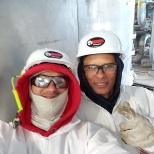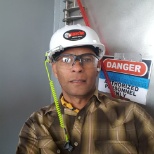Apache

Apache Headquarters Address
2000 Post Oak Blvd.
Ste. 100
Houston TX, United States 77056
(view in map)
About Apache
There's more than only a patch of oil for Apache. The oil and gas exploration and production company has onshore and offshore operations in major oil patches around the world, in North America as well as in Argentina, Australia, Egypt, and the UK North Sea. Its five North American regions include the Gulf of Mexico, the Gulf Coast of Texas and Louisiana, the Permian Basin in West Texas, the Anadarko Basin in Oklahoma, and Canada's Western Sedimentary Basin. In 2011 the company reported estimated proved reserves of about 3 billion barrels of oil equivalent. Apache spreads its production risks both through geographic diversification and through mixing low- and higher-risk properties in its portfolio.
Financial Analysis
Boosted by its acquisitions and stronger oil prices, in 2010 the company reported a surge in revenues. Its net income was also up dramatically (Apache's 2009 results were negatively impacted by an almost $2 billion after-tax write-down of the carrying value of proved property). Increased production and higher oil prices lifted Apache's revenues and net income further in 2011.
Strategy
While the US represents almost 40% of the company's production, Apache is well aware that growth can not come from drilling simply more wells in its existing US mature and declining fields. With that in mind, Apache seeks domestic and international expansion through acquisitions. In 2010 it seized on one such opportunity, buying Gulf of Mexico shelf assets from Devon Energy (which is shedding assets to raise cash) for $1 billion. The acquisition added some 41 million barrels of proved reserves and some 477,200 acres to Apache's asset base.
It also acquired Mariner Energy for $2.7 billion (including Mariner Energy's debt of $1.6 billion), giving the company an entry into the deepwater Gulf of Mexico. Mariner's deepwater portfolio includes 125 blocks, seven discoveries under development, and more than 50 prospects. The deal is a natural extension of Apache's commitment to develop the Gulf of Mexico as a primary area of production, and anticipates a rebounding economy and an increasing demand for oil.
With BP looking to raise cash to defray the cost of its rig disaster in the Gulf of Mexico, in 2010 Apache took the opportunity to buy BP assets in Canada, Egypt, and the US (Permian Basin) for about $7 billion. The deal boosted Apache's estimated proved reserves by 385 million barrels of oil equivalent.
In Canada the company moved in 2010 to expand its supply base, buying 51% of a proposed liquefied natural gas (LNG) export terminal in British Columbia operated by Kitimat LNG Inc.
The company grew its North Sea assets further in 2012, buying Exxon Mobil's Beryl field and related properties for about $1.75 billion.
Growing its unconventional assets in the US, that year the company acquired Cordillera Energy Partners for $2.85 billion. The privately held company owned 254,000 net acres of tight sand plays in Oklahoma and Texas. In 2012 it also bought 49% of Burrup Holdings, an ammonia fertilizer plant in Western Australia, for $439 million. The deal with one of the world's largest ammonia plants secures a long-term market for Apache's natural gas production in the region.
Financial Analysis
Boosted by its acquisitions and stronger oil prices, in 2010 the company reported a surge in revenues. Its net income was also up dramatically (Apache's 2009 results were negatively impacted by an almost $2 billion after-tax write-down of the carrying value of proved property). Increased production and higher oil prices lifted Apache's revenues and net income further in 2011.
Strategy
While the US represents almost 40% of the company's production, Apache is well aware that growth can not come from drilling simply more wells in its existing US mature and declining fields. With that in mind, Apache seeks domestic and international expansion through acquisitions. In 2010 it seized on one such opportunity, buying Gulf of Mexico shelf assets from Devon Energy (which is shedding assets to raise cash) for $1 billion. The acquisition added some 41 million barrels of proved reserves and some 477,200 acres to Apache's asset base.
It also acquired Mariner Energy for $2.7 billion (including Mariner Energy's debt of $1.6 billion), giving the company an entry into the deepwater Gulf of Mexico. Mariner's deepwater portfolio includes 125 blocks, seven discoveries under development, and more than 50 prospects. The deal is a natural extension of Apache's commitment to develop the Gulf of Mexico as a primary area of production, and anticipates a rebounding economy and an increasing demand for oil.
With BP looking to raise cash to defray the cost of its rig disaster in the Gulf of Mexico, in 2010 Apache took the opportunity to buy BP assets in Canada, Egypt, and the US (Permian Basin) for about $7 billion. The deal boosted Apache's estimated proved reserves by 385 million barrels of oil equivalent.
In Canada the company moved in 2010 to expand its supply base, buying 51% of a proposed liquefied natural gas (LNG) export terminal in British Columbia operated by Kitimat LNG Inc.
The company grew its North Sea assets further in 2012, buying Exxon Mobil's Beryl field and related properties for about $1.75 billion.
Growing its unconventional assets in the US, that year the company acquired Cordillera Energy Partners for $2.85 billion. The privately held company owned 254,000 net acres of tight sand plays in Oklahoma and Texas. In 2012 it also bought 49% of Burrup Holdings, an ammonia fertilizer plant in Western Australia, for $439 million. The deal with one of the world's largest ammonia plants secures a long-term market for Apache's natural gas production in the region.
Number of Employees in Apache
5,001 to 10,000
Apache Revenue
more than $10B (USD)
Industry
Links


